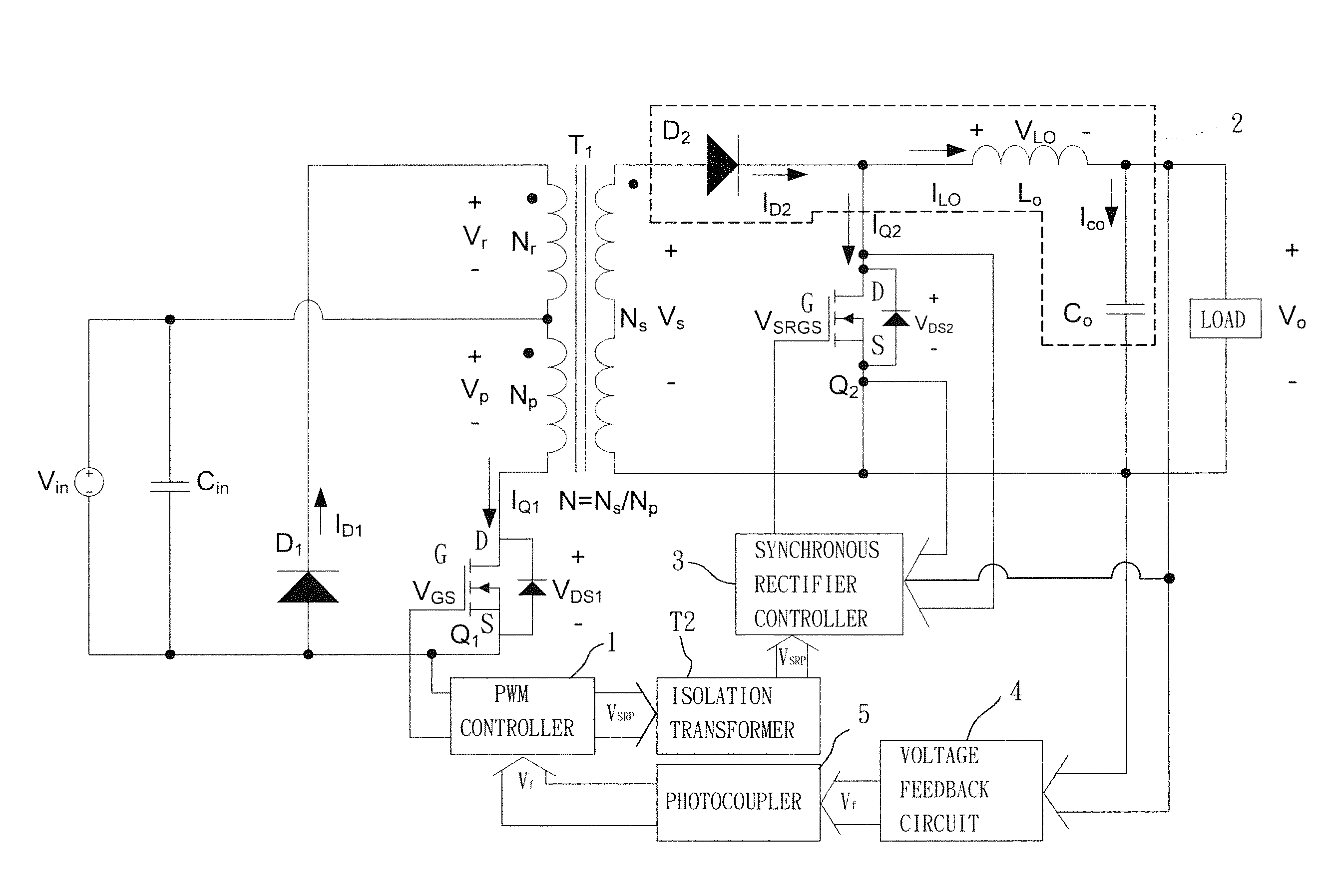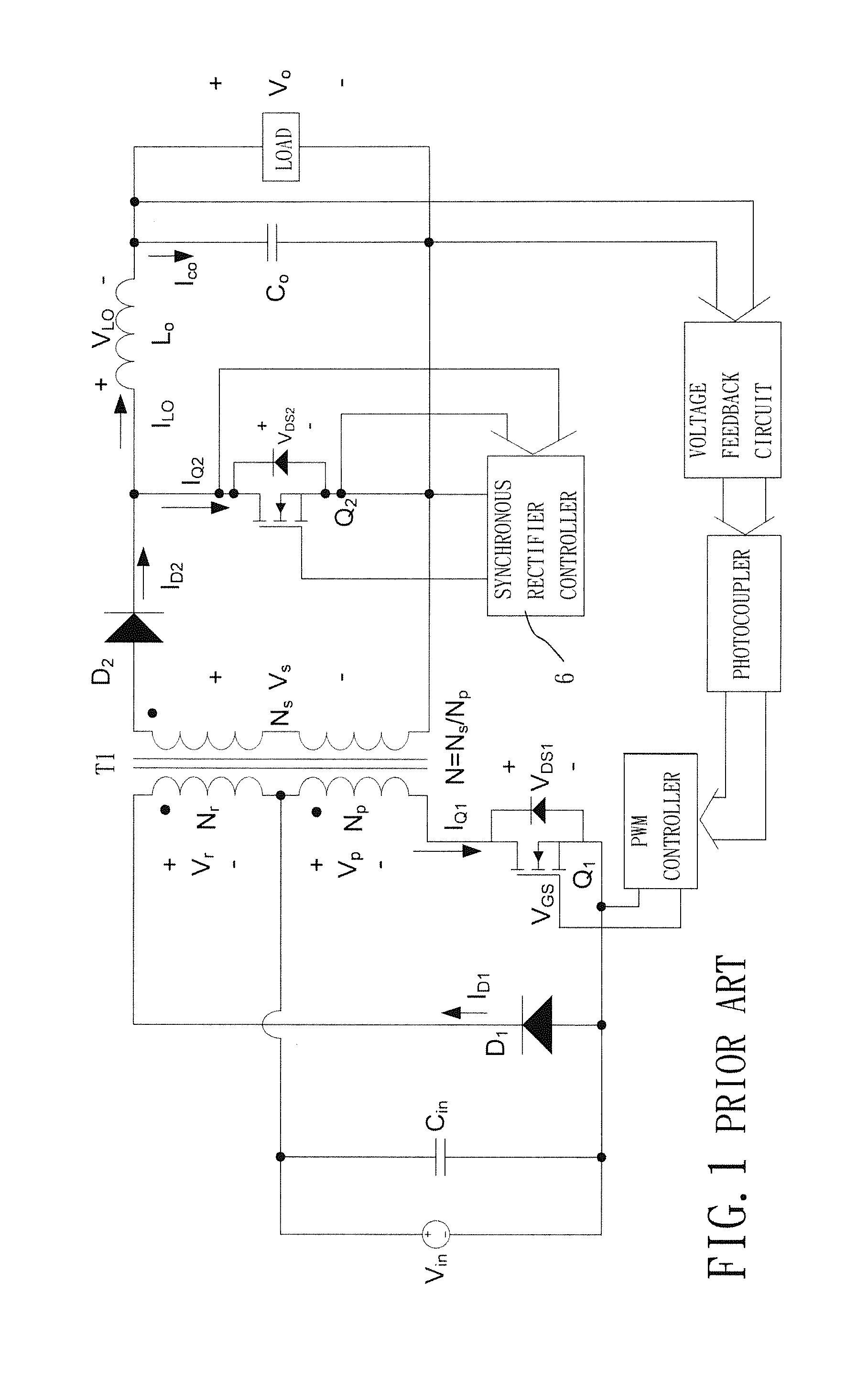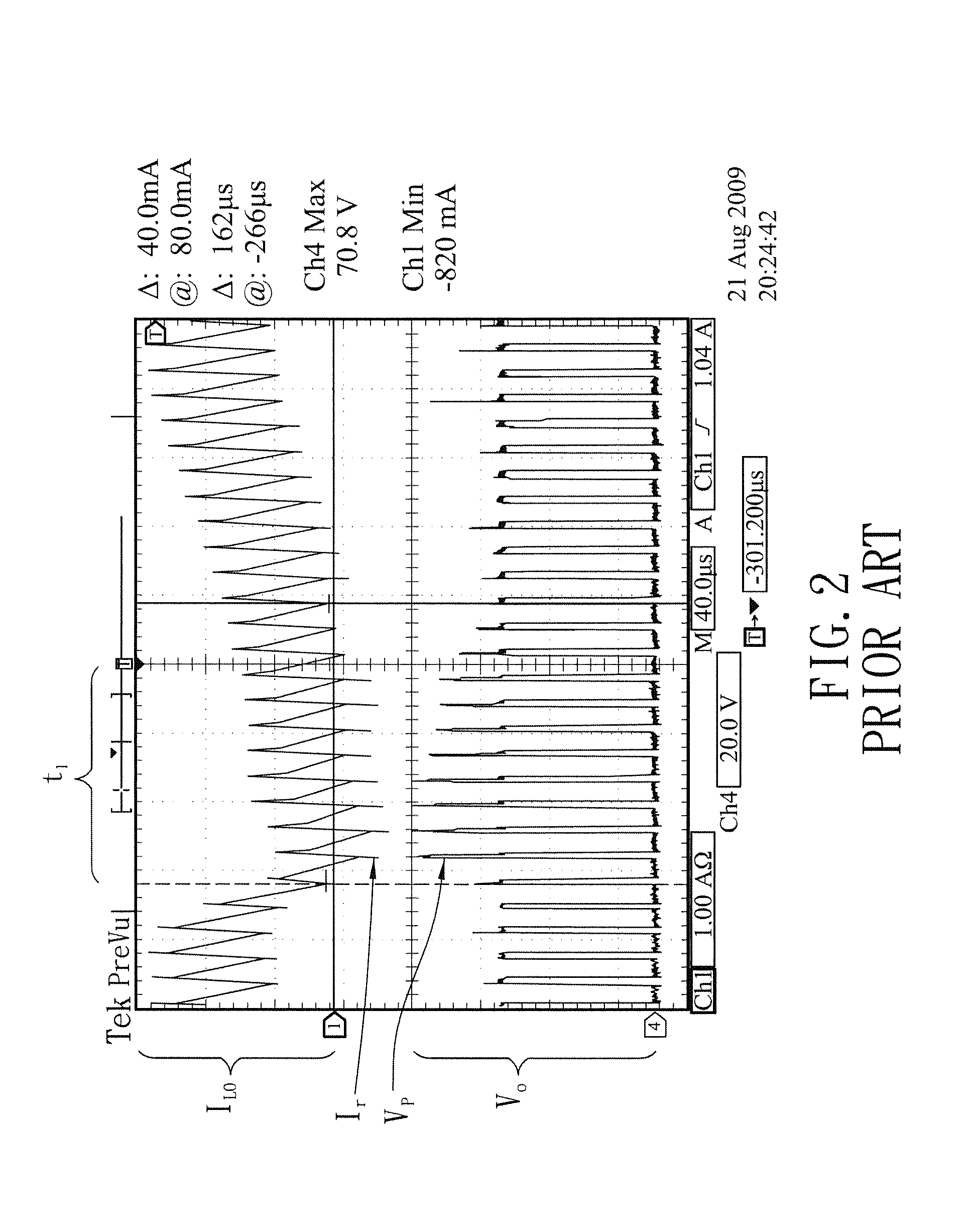Power converting device
a technology of power conversion device and rectifier diode, which is applied in the direction of power conversion system, dc-dc conversion, climate sustainability, etc., can solve the problems of only suitable control method for dcm, inconvenient control method, and energy loss incurred from conduction of rectifier diodes, etc., to promote circuit stability
- Summary
- Abstract
- Description
- Claims
- Application Information
AI Technical Summary
Benefits of technology
Problems solved by technology
Method used
Image
Examples
Embodiment Construction
[0028]Referring to FIG. 3, a forward power converter is given as an example for a first preferred embodiment of a power converting device according to the present invention. The first preferred embodiment of the power converting device comprises a transformer T1, a first switch (i.e., a main switch) Q1, a pulse-width modulation (PWM) controller 1, a rectifier-filter circuit 2, a second switch (i.e., a synchronous rectifier switch) Q2, and a synchronous rectifier controller 3.
[0029]The transformer T includes a primary winding Np and a secondary winding Ns. The primary winding Np has a first end coupled electrically to a high voltage side of an input source for receiving an input voltage Vin. The secondary winding Ns generates an induced voltage Vs in response to induction associated with receipt of the input voltage Vin by the primary winding Np.
[0030]The first switch Q1 is a Metal-Oxide-Semiconductor Field Effect Transistor (MOSFET), and has a first end (Drain) D coupled electricall...
PUM
 Login to View More
Login to View More Abstract
Description
Claims
Application Information
 Login to View More
Login to View More - R&D
- Intellectual Property
- Life Sciences
- Materials
- Tech Scout
- Unparalleled Data Quality
- Higher Quality Content
- 60% Fewer Hallucinations
Browse by: Latest US Patents, China's latest patents, Technical Efficacy Thesaurus, Application Domain, Technology Topic, Popular Technical Reports.
© 2025 PatSnap. All rights reserved.Legal|Privacy policy|Modern Slavery Act Transparency Statement|Sitemap|About US| Contact US: help@patsnap.com



